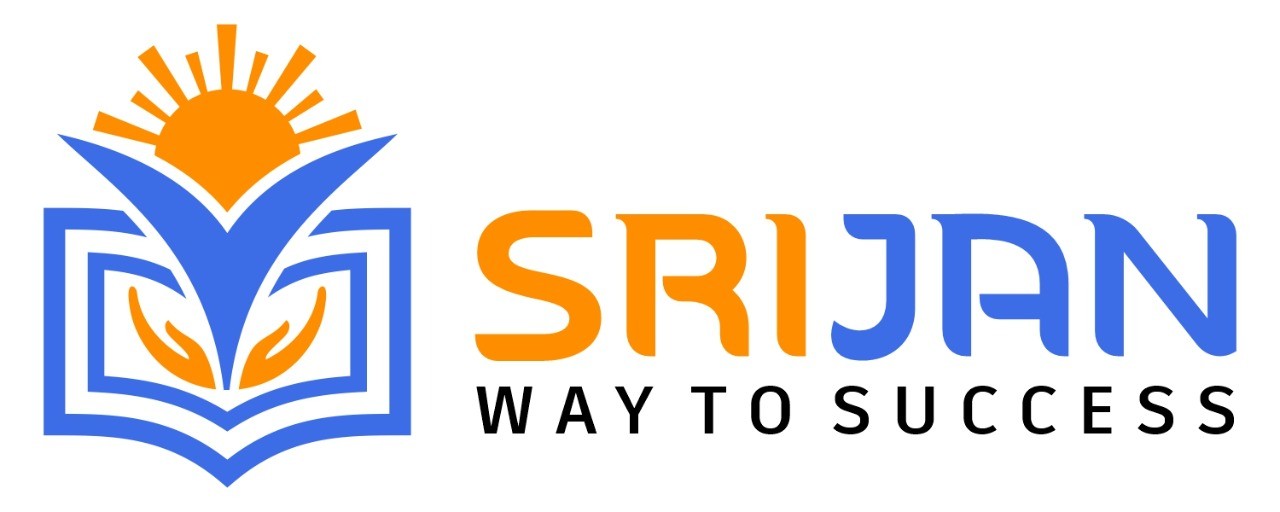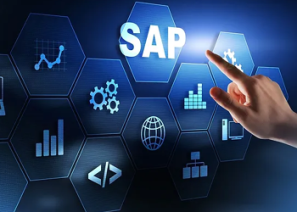SAP PLM Online Training: Efficiently Manage Product Lifecycle and Data
SAP PLM Training || SAP PLM certification Training || SAP PLM Online training || SAP PLM self-paced training || SAP PLM Instructor-Led training
Key Features of Training:
- 30 Hrs Instructor-led Training
- Mock Interview Session
- Project Work & Exercises
- Flexible Schedule
- 24 x 7 Lifetime Support & Access
- Certification and Job Assistance
SAP PLM(Product Lifecycle Management):
SAP PLM (Product Lifecycle Management) is a software solution that helps organizations manage the entire lifecycle of a product, from ideation to retirement. It is an enterprise-level application that integrates different business processes, such as product design, engineering, manufacturing, sales, and service.
SAP PLM enables organizations to streamline their product development and management processes, reduce time-to-market, and increase product innovation. It provides a central repository for product data and documents, enabling teams to collaborate and share information more effectively.
Prerequisites: Who can attend SAP PLM Training?
- Basic knowledge of programming concepts
- Understanding of SAP systems
- Familiarity with cloud computing
- Knowledge of development tools
- Experience in application development
- Understanding of data modeling
- Knowledge of APIs
- Understanding of agile methodology
- Understanding of DevOps
- Basic knowledge of SAP Cloud Platform
- Good Communication Skills.
Responsibilities of SAP PLM Consultant:
- Requirement gathering
- Solution design
- Implementation
- User training
- Support and maintenance
- Integration
- Business process improvement
Course Benefits:
- Job opportunities
- Promotion opportunities (Salary Hike):
- Increased productivity:
- Improved decision-making
- Gain in-demand skills
What is future of SAP PLM Consultant?
- Increasing demand for efficient product lifecycle management
- Digital transformation initiatives
- Expansion of SAP's product offerings
- Industry-specific requirements
- Global reach of SAP
The fee for SAP PLM(Product Lifecycle Management) training can vary depending on several factors such as the location, duration of the course, training format, and level of expertise. SAP offers various training options for PLM, including instructor-led courses, e-learning courses, and virtual live classrooms.
For More details you can Register
SAP PLM(Product Lifecycle Management) Certification FAQ's:
1. What is SAP PLM certification?
A: SAP PLM certification is a credential that validates an individual's knowledge and expertise in SAP's Product Lifecycle Management solution. It demonstrates that the individual has a strong understanding of SAP PLM concepts, configuration, and implementation.
2. What are the benefits of SAP PLM certification?
A: SAP PLM certification can benefit both individuals and organizations. For individuals, it can lead to career growth and advancement opportunities, as well as higher salary potential. For organizations, it can demonstrate their commitment to SAP PLM and provide a competitive advantage in the marketplace.
3. What are the prerequisites for SAP PLM certification?
A: There are no formal prerequisites for SAP PLM certification, but SAP recommends that candidates have a minimum of one year of experience with SAP PLM and a basic understanding of SAP ERP.
4. What is the format of SAP PLM certification exams?
A: SAP PLM certification exams are computer-based and consist of multiple-choice questions. The exams are typically two to three hours long and can be taken at a certified testing center or online.
5. How much does SAP PLM certification cost?
A: The cost of SAP PLM certification varies depending on the country and currency. In general, it ranges from $500 to $1,500 USD per exam attempt.
6. How can I prepare for SAP PLM certification exams?
A: SAP offers official training courses and materials to help prepare for SAP PLM certification exams. There are also third-party training providers and online resources available. It is recommended to review the exam topics and practice sample questions to prepare effectively.
7. How long is SAP PLM certification valid for?
A: SAP PLM certification is valid for two years from the date of certification. After two years, individuals must re-certify to maintain their certification status.
8. How can I find SAP PLM certification opportunities?
A: SAP provides a certification portal where individuals can search for available certification opportunities, register for exams, and view their certification status. It is also recommended to check with local SAP training partners or certification centers for available options.
9. How many levels of SAP PLM certification are there?
A: There are currently two levels of SAP PLM certification: Associate and Professional. Associate level certification requires passing one exam, while Professional level certification requires passing three exams.
10. What topics are covered in SAP PLM certification exams?
A: SAP PLM certification exams cover a range of topics related to SAP's Product Lifecycle Management solution, including product structure management, document management, engineering change management, and quality management.
SAP PLM(Product Lifecycle Management) Certification:
SAP PLM (Product Lifecycle Management) certification is a credential that validates an individual's knowledge and expertise in SAP's Product Lifecycle Management solution. It demonstrates that the individual has a strong understanding of SAP PLM concepts, configuration, and implementation.
There are currently two levels of SAP PLM certification: Associate and Professional. Associate level certification requires passing one exam, while Professional level certification requires passing three exams. The exams are computer-based and consist of multiple-choice questions. The passing score for SAP PLM certification exams varies by exam, but generally ranges from 60% to 65%.
SAP PLM certification can benefit both individuals and organizations. For individuals, it can lead to career growth and advancement opportunities, as well as higher salary potential. For organizations, it can demonstrate their commitment to SAP PLM and provide a competitive advantage in the marketplace.
SAP PLM(Product Lifecycle Management) Curriculum:
1. SAP Product Life-cycle Management Overview
- Theory of Product Life Cycle Management SAP PLM Architecture
- Core PLM Components in ERP SAP PLM Extensions
- SAP GUI Vs SAP NWBC - SAP PLM Online Training Engg. PLM Vs SAP PLM
- PLM systems (Dev, Quality, Pre-Prod, Prod, Inactive, Obsolete) Status Release
- SAP PLM Interface
- Incident Management, OSS Tickets, Remedy Tool, Testing Functional Consultant Roles
2. Engineering Change Management (ECM)
- Introduction to SAP ECM
- End-to-End Process of ECM - SAP PLM Online Training ECR/ECO process - Example
- ECR/ECO process - Example
- Step-by-Step Instructions (CC01, CC02, CC03) Configuring SAP ECM
- ECR/ECO status Management
- Real time Scenarios, Incident Management
- Course Curriculum
3.Master Data Management (MDM)
- Types of Data (Organizational, Master, Transactional) BOM Categories - SAP PLM Online Training
- BOM Usage Variant BOM
4. Classification System
- Class
- Characteristics - SAP PLM Online Training Object Classification
5. Recipe Development – NWBC/Fiori Environment
- Recipe Definition Recipe types
- Recipe formula
- Recipe calculations
- Recipe Process - SAP PLM Online Training Recipe/Specification Status
- Frontend Functionalities
6. Specification management – NWBC/Fiori Environment
- Specification Types
- Property Tree
- SAP PLM Online Training Recipe/Specification Status
- Frontend Functionalities
7.GSS (BOM synchronization)
- How to generate Bill of material from recipe
8.GSS (Master recipe synchronization)
- How to generate Master recipe from recipe
SAP PLM(Product Lifecycle Management) Interview Questions & Answers:
1. What is SAP PLM?
A: SAP PLM is a comprehensive solution that helps organizations manage their product lifecycle from ideation to retirement. It includes modules for product structure management, document management, engineering change management, quality management, and maintenance, repair, and overhaul (MRO).
2. What are the key benefits of using SAP PLM?
A: The key benefits of using SAP PLM include improved product quality, reduced time-to-market, increased efficiency, streamlined processes, better collaboration, and increased customer satisfaction.
3. How do you define a Bill of Materials (BOM) in SAP PLM?
A: In SAP PLM, a BOM is a structured list of components and materials required to manufacture a product. It defines the relationships between the components and their quantities, as well as other attributes such as procurement type and usage.
4. What is an Engineering Change Order (ECO)?
A: An Engineering Change Order (ECO) is a document that describes a proposed change to a product's design or BOM. It includes the reasons for the change, the impact on the product, and the steps required to implement the change.
5. How do you manage documents in SAP PLM?
A: In SAP PLM, documents can be managed in a centralized repository. Documents can be created, revised, approved, and distributed using automated workflows. SAP PLM also provides version control, access control, and audit trails to ensure compliance with regulatory requirements.
6. What is the purpose of Quality Management in SAP PLM?
A: The purpose of Quality Management in SAP PLM is to ensure that products meet or exceed customer expectations and comply with regulatory requirements. It includes defining quality standards, conducting inspections, and tracking defects.
7. How do you integrate SAP PLM with other SAP modules?
A: SAP PLM can be integrated with other SAP modules such as SAP ERP, SAP CRM, and SAP SCM using standard integration technologies such as IDocs and BAPIs.
8. What are the different types of SAP PLM projects?
A: The different types of SAP PLM projects include product structure management, document management, engineering change management, quality management, and maintenance, repair, and overhaul (MRO).
9. How do you ensure data integrity in SAP PLM?
A: Data integrity in SAP PLM can be ensured by implementing access control, version control, audit trails, and data validation rules. Additionally, regular backups and disaster recovery plans can help ensure data availability.
10. What are the key challenges in implementing SAP PLM?
A: The key challenges in implementing SAP PLM include data migration, change management, user adoption, customization, and integration with other systems. Effective project management, stakeholder engagement, and user training can help overcome these challenges.
11. What is the purpose of Material Master in SAP PLM?
A: The Material Master is a central repository for all the materials used in the production of a product. It contains information about the material type, description, classification, and other relevant data.
12. How do you define and manage classes in SAP PLM?
A: Classes in SAP PLM are used to classify objects such as materials, documents, and BOMs. They are used to group objects based on common characteristics such as material type or product line. Classes can be defined and managed using the Classification module in SAP PLM.
13. What is the purpose of Variant Configuration in SAP PLM?
A: Variant Configuration in SAP PLM is used to manage the variants of a product. It allows organizations to create and manage different configurations of a product based on customer requirements or market needs.
14. How do you manage engineering changes in SAP PLM?
A: Engineering changes in SAP PLM are managed using the Engineering Change Management module. It includes features such as change requests, change orders, and change workflows to ensure that changes are managed effectively.
15. What is the difference between Engineering Change Order (ECO) and Engineering Change Request (ECR)?
A: An Engineering Change Request (ECR) is a document that describes a proposed change to a product. An Engineering Change Order (ECO) is a document that approves and implements the change. In other words, an ECR is the starting point of the change process, while an ECO is the endpoint.
16. How do you define and manage Quality Notifications in SAP PLM?
A: Quality Notifications in SAP PLM are used to track and manage quality issues related to a product. They include features such as defect tracking, root cause analysis, and corrective actions. Quality Notifications can be defined and managed using the Quality Management module in SAP PLM.
17. How do you manage compliance with regulatory requirements in SAP PLM?
A: Compliance with regulatory requirements can be managed in SAP PLM by defining and managing relevant documents and data such as specifications, standards, and test reports. Automated workflows can be used to ensure that compliance requirements are met.
18. How do you measure the success of an SAP PLM implementation?
A: The success of an SAP PLM implementation can be measured by the achievement of business goals such as increased efficiency, reduced costs, improved product quality, and increased customer satisfaction. Metrics such as time-to-market, defect rates, and customer feedback can also be used to measure success.
19. How do you ensure user adoption of SAP PLM?
A: User adoption of SAP PLM can be ensured by providing effective user training, engaging users in the design and implementation process, and addressing user concerns and feedback. Additionally, user-friendly interfaces and workflows can help improve user adoption.
20. What is the role of a SAP PLM consultant?
A: The role of a SAP PLM consultant is to help organizations implement SAP PLM solutions that meet their business needs and objectives. This involves analyzing business requirements, designing and configuring the solution, managing the implementation process, and providing user training and support.
Participants will have 24/7 access to our online lab, providing hands-on experience with SAP PLM tools and scenarios.
This includes server access to S/4 HANA 2023 for 1 year, ensuring you have ample time to practice and apply your skills in a real-world environment.
With this extended access, you can work on projects, explore advanced features, and solidify your understanding of SAP PLM in the latest SAP S/4 HANA version.















